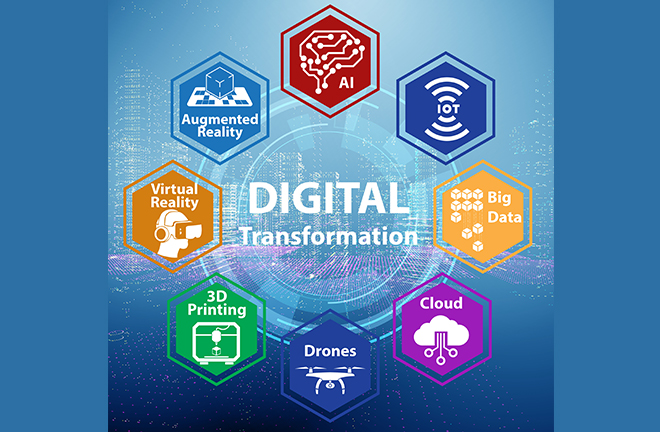Technological revolution and state information capacity

Digitalization has provided technical support for tackling information issues in the governance process. Photo: Elnur/TUCHONG
State-society relations are important for understanding state capacity, with information serving as an intermediary between the state and society. At the same time, information bottlenecks persist in the process of state governance. Digitalization has facilitated information exchange and provided technical support for addressing these issues in the governance process.
State-society alienation
In pre-modern societies, statistical surveys were simple, legal systems were rudimentary, and social facts were barely discernible due to limited technological capabilities. Only the elite were capable of collecting social facts, and the collection and processing of governance information was localized and sporadic. The connection between the state and individual citizens was obstructed due to a lack of means of information communication, leading to a governance system where community mechanisms took precedence over administrative mechanisms. As small-scale agricultural production fostered regional trust and localism, ignorance of the state was widespread.
State-society overlap
Since modern times, highly organized social life has required the state apparatus to conduct information-based surveillance which aims to eliminate unclear, localized social practices and replace them with standardized modes. The Industrial Revolution innovated information collection and processing mechanisms through advancements in physical and organizational technology. Firstly, industrial infrastructure such as railways and telegraphs partly mitigated information loss caused by spatial division, allowing the state to access dynamic social information such as individual movement trajectories and market transactions. This contributed to the formation of the information basis for state control over a complex society.
Secondly, the standardization of processes, specialized division of labor, and centralized management during the industrialization process collectively gave rise to a bureaucracy with integration capabilities. As society experienced a surge in the movement of people and goods, it grew increasingly complex and heterogeneous. Weberian bureaucracies deal with complex social information through a public approach to achieve more agile management. On the basis of such bureaucracies, governments collect information through population censuses, social statistics, and other channels, ultimately establishing national databases.
The state’s ability to identify and collect social facts has been considerably improved through routine monitoring of local information, which facilitates precise communication of the will of the state. The Industrial Revolution not only enhanced state information capacity but also expanded the scope of state functions. While the state extracts social information and social resources, it also needs to utilize them to provide better services for its people. State-society relations have thus transitioned from one-way extraction to an overlap between the state and society.
State-society integration
Since the information revolution that began in the mid-20th century, information has progressively aggregated into big data, which functions as a factor of production. The disruptive impact of the information revolution on state information capacity is exemplified by four mechanisms: an information communication mechanism based on the internet, an information collection mechanism based on big data, an information processing mechanism based on cloud computing, and an information integration mechanism based on digital platforms. The widespread application of networked, data-driven, intelligent, and platform-based technologies allows for prompt collection and processing of social information.
Convenient access to the internet, accumulation of massive governance data, and exponential growth of computing power allow the state to build an online “platform government” alongside the physical government. On one hand, digital platforms incorporate more social facts into the state governance system and uncover valuable information through big data analysis, extending the boundaries of state functions. On the other hand, with the popularization of digital platforms, state-citizen engagement has transitioned from the group-level to the individual-level, rendering social facts and individual citizens much more visible to the state.
Balanced state
The state leverages technology to collect dynamic social information and continuously embeds itself in daily operations at the community level, which contributes to state-society information integration and the expansion of state functions. While effective state capacity necessitates clear information, the pursuit of clarity should not exceed reasonable limits. The deep integration of the state into society may burden state functions excessively, increasing information costs and diverting attention, thereby undermining governance effectiveness.
Conversely, improving state capacity depends on both the social governance capabilities of the state and the self-governance capabilities of society. Overly extensive state penetration into society through technological means risks marginalizing interactions among local communities and local knowledge, leading to diminished social autonomy. Building a balanced state requires sharing information between the state and society to a proper extent and fostering societal vitality in order to create governance synergy among the community mechanism, the administrative mechanism, and the platform mechanism.
Lyu Junyan is from the School of Political Science and International Relations at Tongji University. Liu Yifei is from the School of Government at Peking University.
Edited by WANG YOURAN
